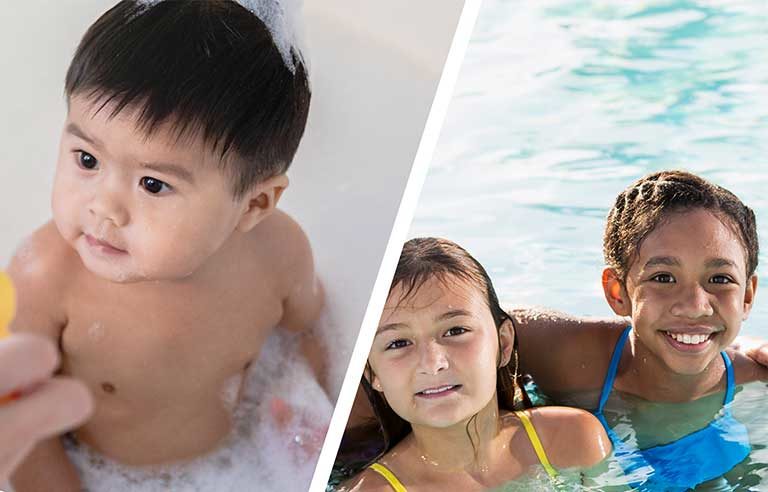Protect kids from drowning
Advice for parents

Photos: iStockphoto
Drowning is the leading cause of death for kids younger than 4.
It can happen “in as little as 2 inches of water,” says Lisa M. Zarda, executive director of the United States Swim School Association. “Buckets, coolers – anything that can hold water can be a potential risk. Drowning happens when you least expect it.”
Kids of every age are at risk of drowning – it’s the second leading cause of unintentional death for children younger than 14, Zarda says. More facts:
Drowning is silent. “It’s not like the movies with splashing and screaming,” Zarda says. “It can happen in an instant. One minute your child is by your side and the next moment they’re under water.”
Drowning doesn’t discriminate. “A drowning can happen to anyone, no matter your socioeconomic status or swimming ability,” she warns.
Simple steps can help prevent drownings. Here’s some advice for parents and caregivers:
- Never leave a baby or toddler unsupervised in the bathroom – not even for a minute. If you have to leave, take them with you.
- Keep toilet, washing machine and diaper pail lids down.
- Always empty sinks and keep the drains open.
- Keep coolers and buckets empty and out of reach of kids.
- Starting when they’re young, teach your kids that they need to ask you or an adult caregiver for permission to go in or near water.
- If you have a pool at home, make sure it’s surrounded by fencing and has a self-locking gate. Close and cover hot tubs.
- Don’t leave pool toys out, as they can catch a child’s eye and draw them near the water.
- Don’t count on swim rings, arm floaties or pool noodles to keep kids safe.
- Going on a boat? Kids – and adults – should always wear a Coast Guard-approved life vest when on board. Same goes for riding on a jet ski.
- Sign your child up for swim lessons. “The earlier you start swim lessons, the more opportunities they have to learn the skills they need if they find themselves struggling in water,” Zarda says. Research has shown that swim lessons between the ages of 1 and 4 can reduce your child’s risk of drowning by 88%. In fact, Zarda says that the American Academy of Pediatrics recommends swim lessons for all children starting as early as 1 year old.
- If your child goes to a friend’s house to swim, ask the friend’s parents if the kids will be supervised.
- Even as your kids grow into teens, continue to talk with them about staying safe in and around water.
- Take a CPR class and encourage other parents to do the same.
Post a comment to this article
Safety+Health welcomes comments that promote respectful dialogue. Please stay on topic. Comments that contain personal attacks, profanity or abusive language – or those aggressively promoting products or services – will be removed. We reserve the right to determine which comments violate our comment policy. (Anonymous comments are welcome; merely skip the “name” field in the comment box. An email address is required but will not be included with your comment.)
